Showing 55 to 72 of 144 results found.
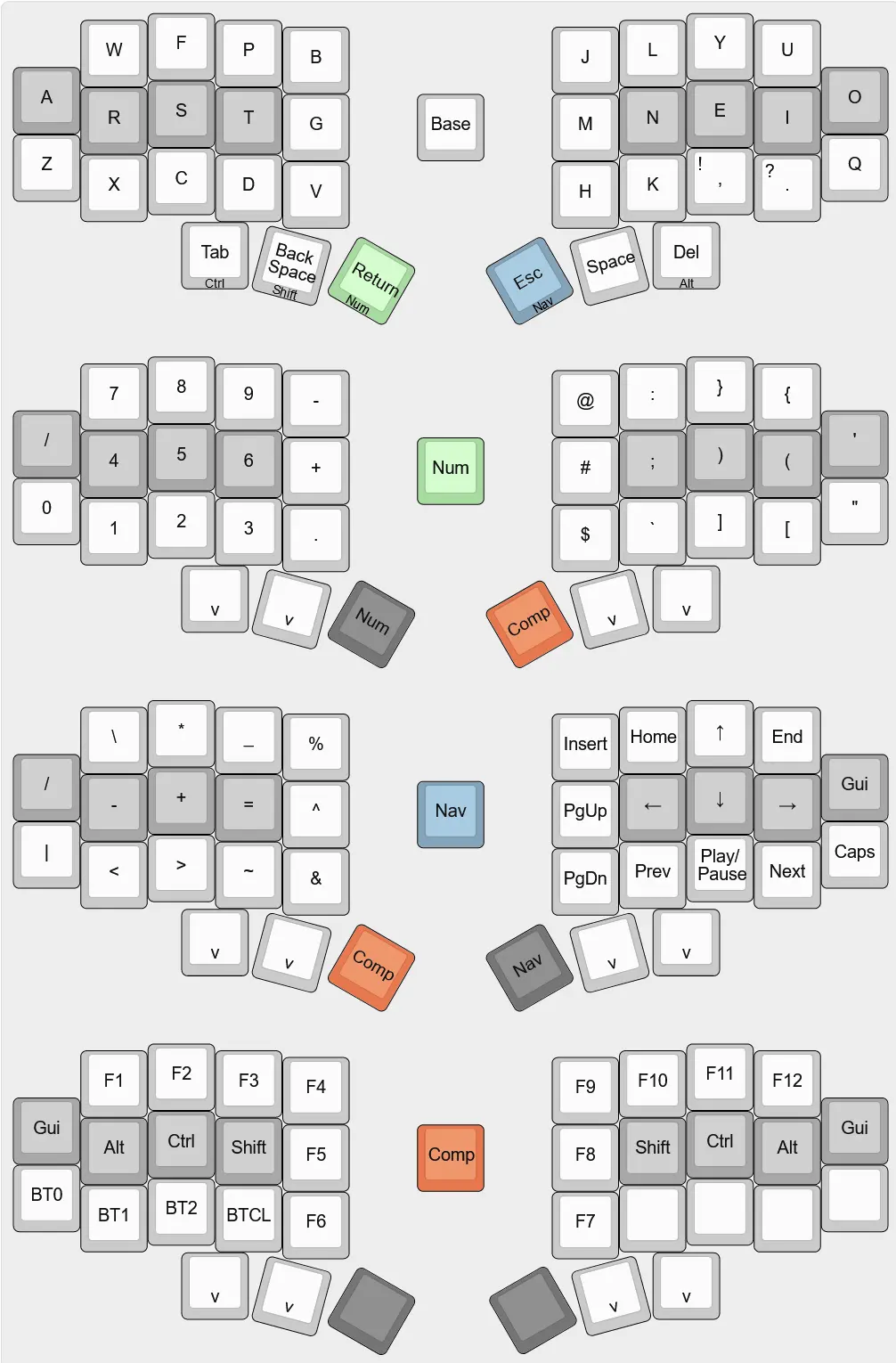
34 keys
English
4 layers
Colemak
Keymap for a custom 34-key split keyboard that doesn't use homerow or callum style mods.

42 keys
Spanish, English
10 layers
QVERFY
QMK based Corne Keymap. It features OS independent shortcuts, custom modifier keys, RGB themes, key sequences, and much more.
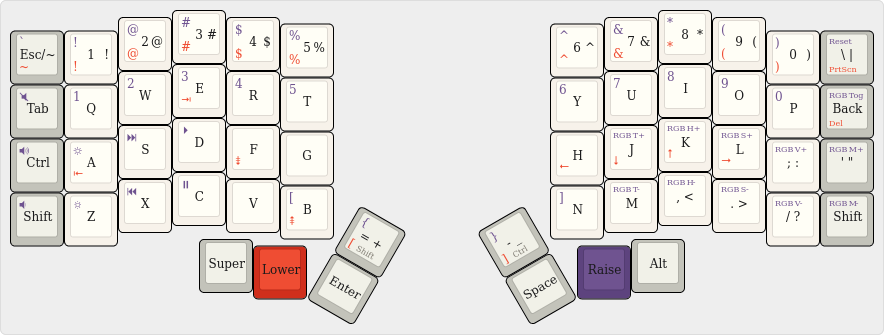
56 keys
English
3 layers
QWERTY
A gentle departure from the default layout.
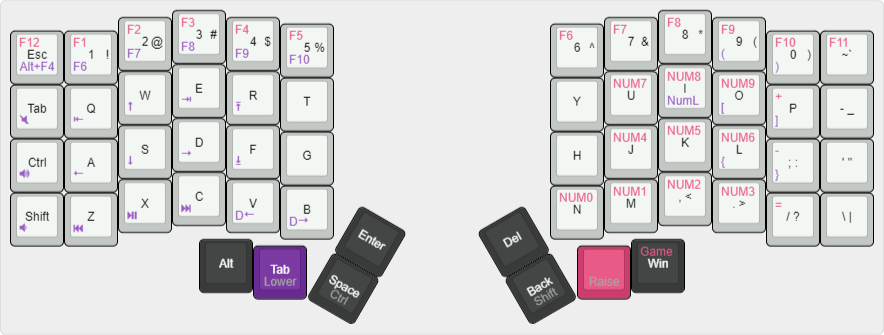
56 keys
English
5 layers
QWERTY
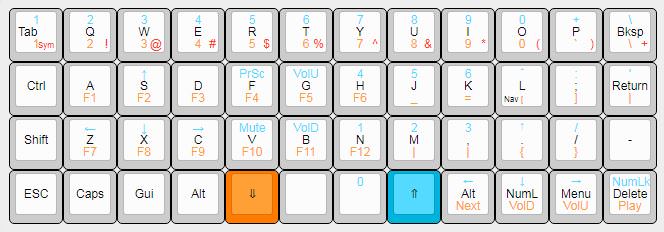
48 keys
English
10 layers
QWERTY
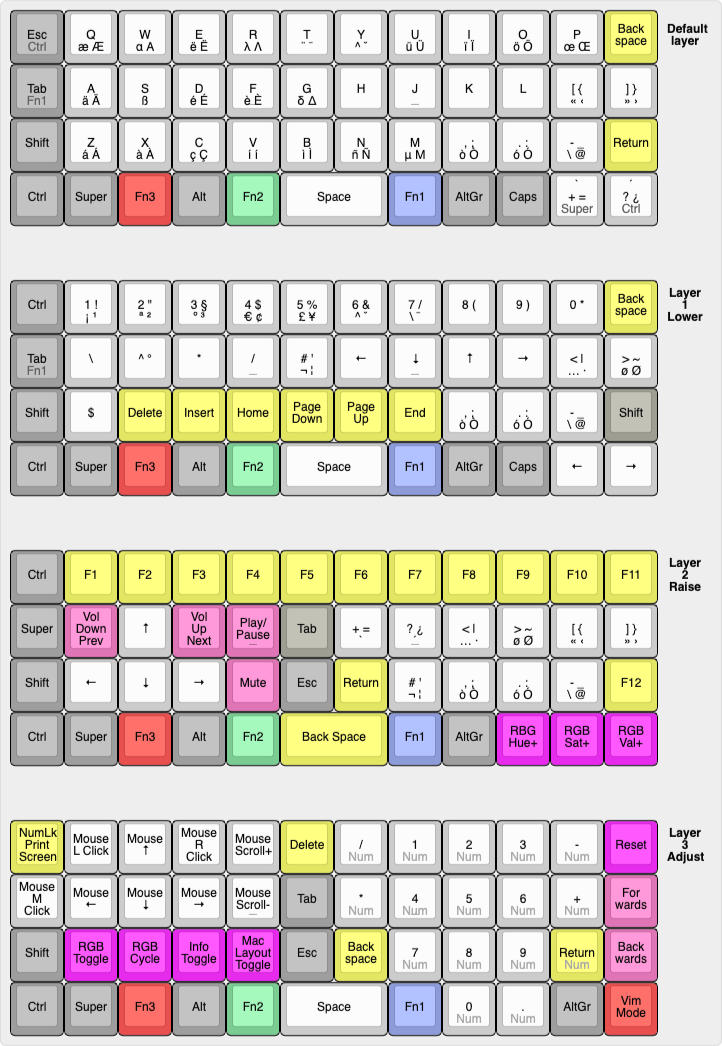
47 keys
English
12 layers
QWERTY
The reason many keys are laid out as they are is to make it comfortable to access the most used keys with either both hands or sometimes only one hand on the keyboard. Most of the special characters that aren't normally part of qwerty are not going to be implemented on a keyboard level, they require a custom xkb layout

30 keys
English
4 layers
Hands Down
ZMK Config for my Hummingbird (and related) keyboards
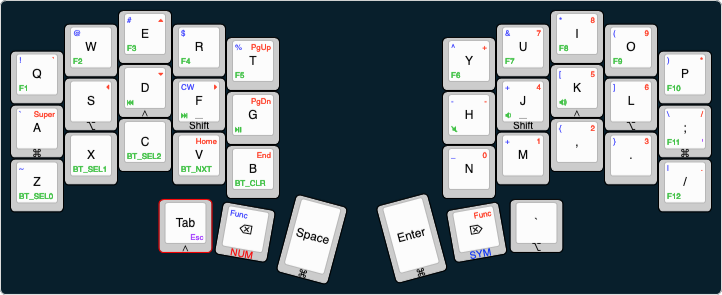
36 keys
English
4 layers
QWERTY
Keymap for 5x3+2 Corne Keyboard with a numpad/arrow key layer and a symbol layer that's not too unique

46 keys
English
4 layers
QWERTY
A 46-key split layout optimized for vim-centric software development on macOS.
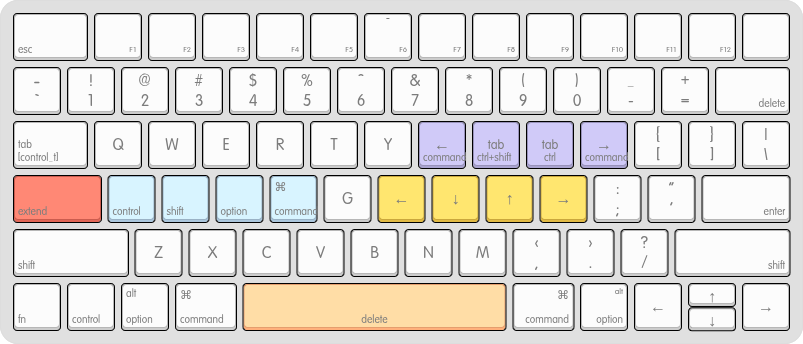
78 keys
English
3 layers
QWERTY
A minor change for a familiar layout to introduce additional layers in a standard keyboard.
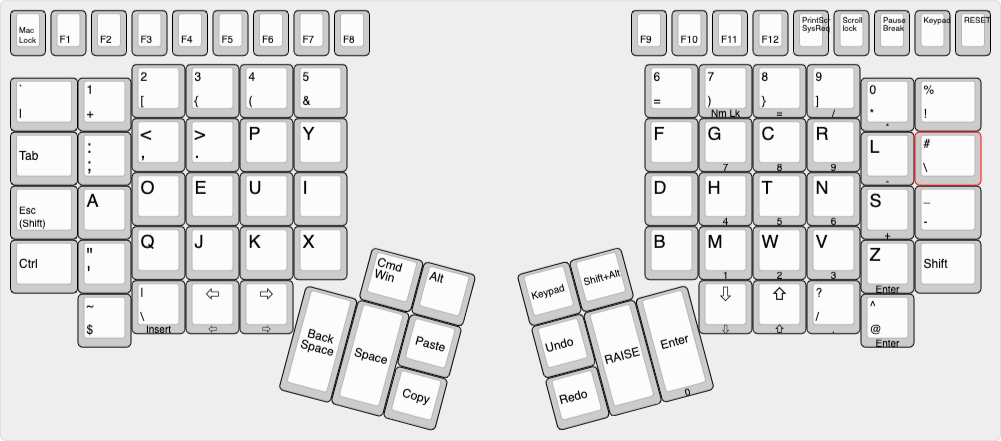
86 keys
English
4 layers
Dvorak, QWERTY
Loosely based off Programmer Dvorak and ThePrimeagen's Real Programmer's Dvorak

31 keys
English, Spanish
3 layers
QWERTY, Colemak
A layered keyboard layout designed to augment your keyboard's capabilities without altering or interfering with its default behaviour, so you can remain productive as you learn to use it.
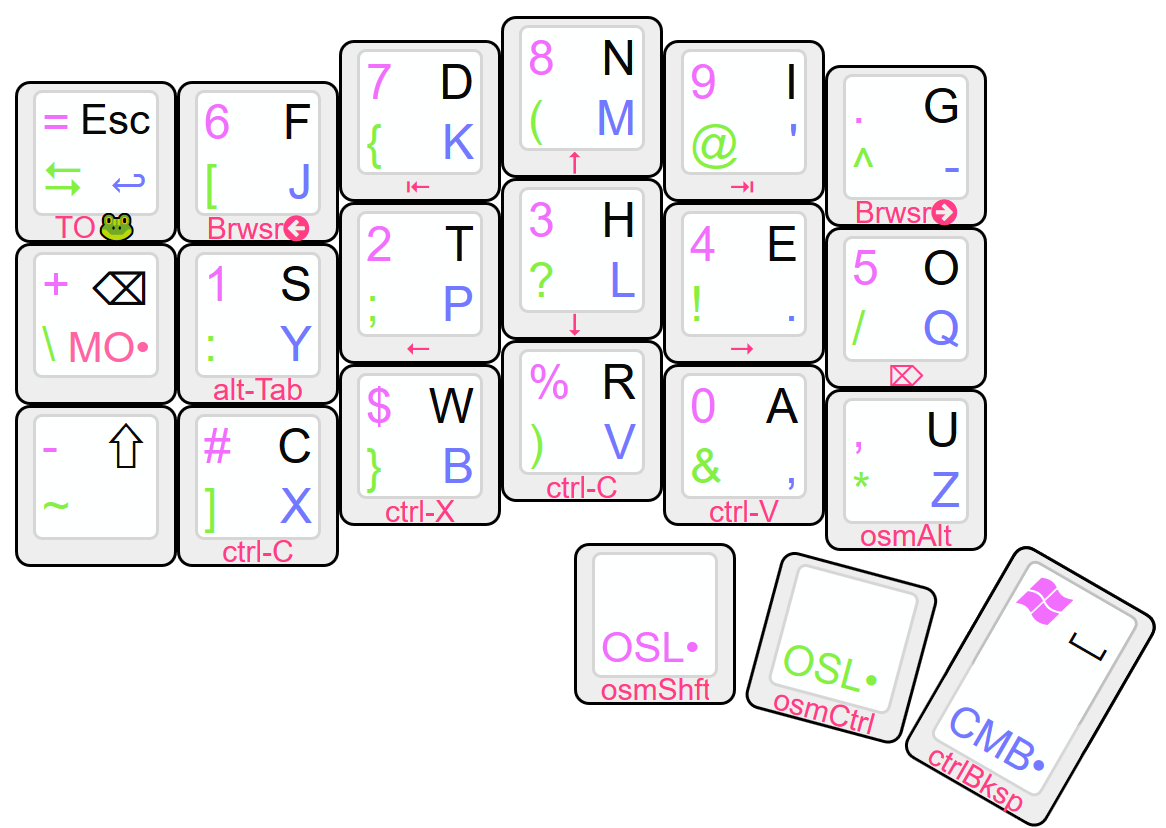
21 keys
English
4 layers
Frogpad
Improved One-Handed Frogpad layout, implemented in QMK.
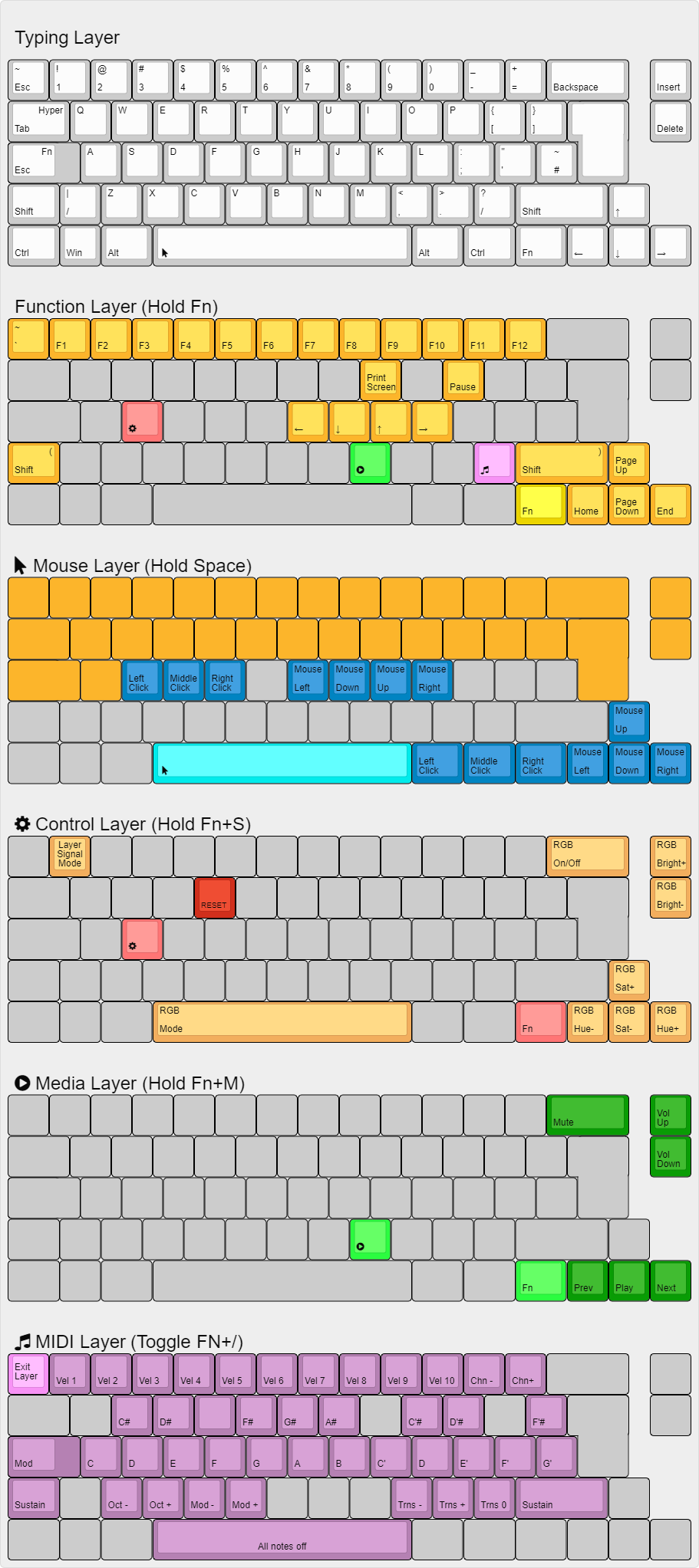
66 keys
English
7 layers
QWERTY
- This layout is a combination of the mouse_keys and the win_optimized layouts
- This layout is optimized for an ISO layout
- The CapsLock is disabled and works as ESC when tapped and FN when held
- The TAB key works as TAB when tapped, and HYPER (CTRL + ALT + SHIFT + CMD) when held
- Notably, it also contains a MIDI layer.

34 keys
French, English
8 layers
Erglace, AZERTY
A callum-style keymap optimized for French, English and code
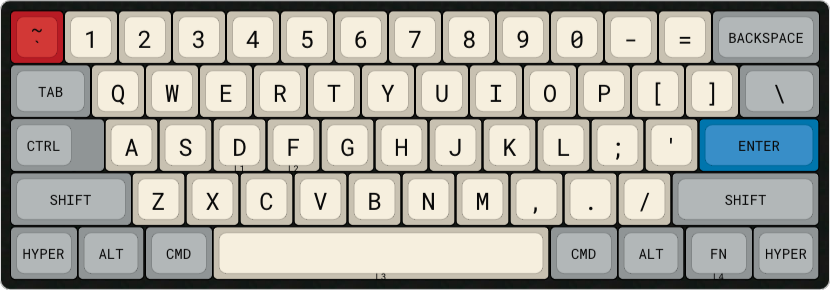
67 keys
English
6 layers
QWERTY
This is a MacOS-specific keymap for DZ60 configured in a standard 60% ANSI layout, with a stepped Caps Lock
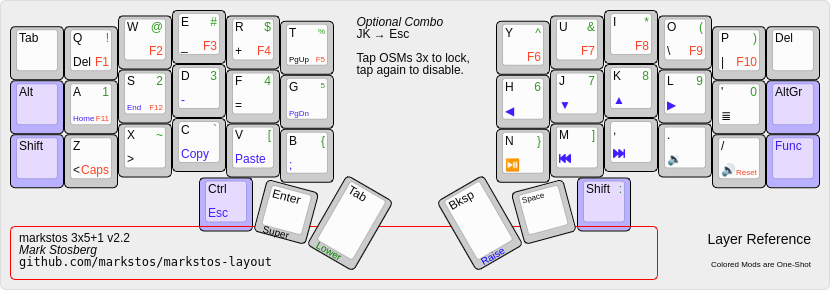
42 keys
English
4 layers
QWERTY
- Be similar enough to conventional laptop keyboards
- Most keys should be triggered by one or two key presses.
- Minimize awkward hold-and-tap sequences by using one-shot modifiers.
- Shift work from weak pinkies to strong thumbs
- Thumbs should rest on commonly type keys
- Vim- and TWM-friendly features
- Include media keys

8 keys
English, Japanese
5 layers
Perkins Brailler
A 8-key keyboard for braille characters














